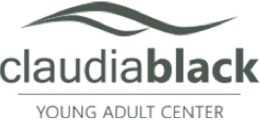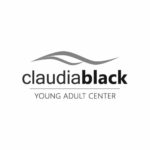By Claudia Black and Leanne Lemire
Leah, 22, enters treatment with a history of substance abuse since the age of 14. She also has a history of disordered eating and is addicted to Adderall. By the time she enters treatment, her use of drugs has ranged from alcohol and cocaine to a variety of speed derivatives, yet it is heroin from which she needs to detox. She has been raped more than once while under the influence and has just made her third suicide attempt.
Josh, 25, is seeking help for depression. He was severely isolated in his bedroom at his parents’ home, always playing video games. He has few peer relationships and lacks any motivation for attending school or getting a job. He describes his depression as experiencing a deep emptiness and darkness inside. As Josh seeks treatment for his depression, it quickly becomes apparent he is addicted to gaming and should be assessed for porn addiction as well.
Sara, 19, comes to treatment wearing all dark clothing, avoids eye contact with anyone and is unable to attend school in her severe depressed state. She was adopted, which often fuels attachment disruption issues, and she experienced chronic bullying throughout her school years.
At the Claudia Black Young Adult Center at The Meadows in Wickenburg, Arizona, the addictions we see run the gamut from substances to process addictions. Usually, people with addiction enter treatment identifying the most behaviorally problematic addiction, but seldom do clients show up with only one.
Depression is prevalent for many young people with addiction, and depression and some form of anxiety disorder are the most common mental health issues and co-occurring diagnoses. With sound psychiatric assessment, it is not uncommon to identify an untreated bipolar disorder and conditions of attention deficit disorder and attention deficit hyperactivity disorder.
Trauma is also pervasive in this age group. For both men and women, sexual assault has often occurred. Both in the context of their addiction and growing up years, many have been exposed to accidents and violence. Acrimonious divorce, parents with addiction, the death of a peer or family member, chronically absent or rejecting parents, and bullying are just some of the experiences that fuel their self-loathing, self-mutilation, anxiety, depression, and the desire to medicate with alcohol and other substances.
When we started taking patients, our perception was that we would be addressing the stereotypical failure-to-launch experience. What we have come to realize is that those in need of treatment are not launching due to their undiagnosed addictions and mental health issues that are most often combined with unhealthy parenting practices.
Core Treatment Elements
At the Claudia Black Young Adult Center, we have found the following core programming elements are needed to address the complexity of this age group:
- Grounding techniques that range from breath work, sensorimotor psychotherapy modalities, neurofeedback, yoga and tai chi, and acupuncture help clients regulate their emotions and focus on treatment.
- Treatment-specific trauma therapies including eye movement desensitization and processing, Somatic Experiencing, The Meadows signature “Survivors” five-day workshop, action-based experiential modalities, art therapy, and sand tray help clients identify and work through their negative self-beliefs and destructive behavioral patterns.
- Community peer culture keeps clients accountable to one another, creates mentoring associations and allows them to experience drug-or-alcohol free peer relationships.
- Gender-responsive programming facilitates opportunities for clients to form connections and develop support within their own gender.
- Life skills such as problem-solving, negotiation, healthy communication and time management help the transition back to everyday life.
- The 12-step program of some form is encouraged even for those who do not identify as addicts and could Al-Anon, Adult Children of Alcoholics or Codependents Anonymous, which is particularly popular with clients who are depressed and anxious.
- Fun in recovery is important. If they don’t believe they can have fun being clean and sober, they won’t stay clean and sober. The client who has a primary mood or anxiety disorder often experiences laughter and fun for the first time in the treatment setting, giving them a glimpse of how life can be as they move on with their recovery plan.
- Family involvement during treatment is critical to treatment.
It is important to note that it is from their family that the young adult will find either their greatest support or greatest sabotage. They come into treatment very angry or distant from their parents, yet they only want to know they are loved and accepted. The flip side that we see is the severely enmeshed family relationships where learning autonomy will be critical for their recovery. For these reasons, family engagement is the foundation of what we do.
The Possibilities
Our clients come to treatment full of guilt, shame, self-loathing and hopelessness yet may present as arrogant, entitled and angry or overwhelmed, withdrawn and fearful. The exciting aspect of working with this age group is that with a highly mindful, well-structured program and high staff-to-patient ratio, we witness transformation. These young adults are now believing in their own self-worth, have greater coping skills, and leave with hope and concrete plans for ongoing recovery and healing. They embrace the future knowing their lives will be different and are ready to take those next needed steps.
For more information on the Claudia Black Center, call 855-333-6075 or visit us online.

